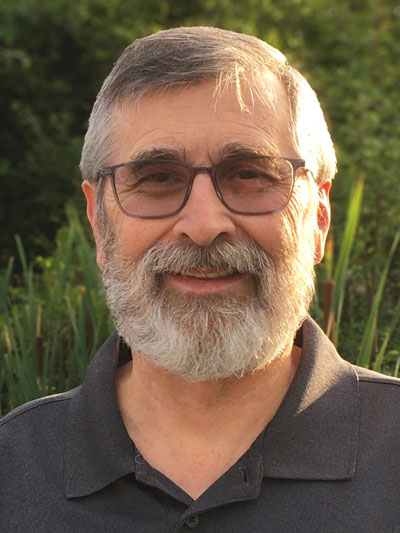Divination? Divination is condemned in Scripture (Deut. 18:9-14; 2 Kings 17:17-18) and therefore a very negative term. But, divination in the evangelical Church? Has Plumbline crossed over the line or gone out of kilter on this topic? To put it in current parlance, this must be way “outside the box.” Nevertheless, as you read this entire newsletter, I think you will come to agree that divination is definitely “inside the box,” alive and well in many of our churches.
It will be necessary to define divination very carefully. In this issue I have invited Pastor Bob DeWaay to do this “heavy lifting” and focus on a correct, biblical definition of divination. In this introductory article I will try to give some historical context to the current expressions now making the rounds in churches. It is all basically one phenomena with minor differences and mutation.
Divination generally refers to attempts to learn “hidden things” that cannot be known by normal means. Divination falls into two broad categories: mechanical and internal. Mechanical divination uses physical means to acquire hidden knowledge. Examples of this include such things as gazing into crystal balls, examining the livers or other internal organs of animals, interpreting the way arrows land after being thrown into the air, and reading Tarot cards. The internal category, sometimes called “soothsaying,” involves conjuring up a spiritual entity during a trance or an altered state of consciousness. Sometimes this spirit entity will appear as a person, no longer living, who returns and speaks words of wisdom. Sometimes the spirit who is “called up” speaks “through” a medium. In Acts 16:16 the slave girl had a “spirit of divination.” (It is interesting to note that, because there was often trickery involved, in the first century the word used for divination was also broadly used for the act of ventriloquism.)
Whatever the category or method used, divination is an attempt to ferret out hidden (occult) information. The incursion of divination into the Church is of the internal rather than the mechanical category and its focal points are the visualization techniques employed in “inner-healing” and imaginative prayer.
Visualization techniques have a long history reaching back to ancient Egypt, where tradition taught that the physical could be transformed through mental imagery; they appear in Hindu/Buddhist practices both ancient and modern; they find expression in the contemplative prayer of the early Christian monastic movement. These imagery techniques are also well documented in current occult and New Age literature. In New Age circles it is widely held that the most effective and most widely use method to contact spirit entities or guides is called “imaginative visualization.” Leading occult writer David Conway, in his book Magic: an Occult Primer, states the absolute necessity of visualization for performing ritual magic:
“….the technique of visualization is something you will gradually master, and indeed must master if you are to make any progress at all in magic…” (1)
Among Christian practitioners who are teaching and experiencing inner-healing and imaginative prayer, there would be a heated protest to our use of the term “divination.” But what else does one call the imaginative visualization (conjuring up) of a spirit entity, which presents itself to the person as Jesus himself? Let’s call a spade a spade – this is divination!
Nevertheless, all over the country specialists in healing of the memories are leading entire congregations to visualize Jesus as present at each person’s birth, at some traumatic childhood episode, or even prenatal events. Purportedly, this visualized Jesus utters words of forgiveness and actually changes the historic event. Imaginative prayer functions in a similar manner. Those who are practicing and teaching these visualization do acknowledge, as they must, that similar techniques are also current in occult circles. Their defense to the charge of using occultic technique is that the occult world is only counterfeiting a truth that finds its source in God. But their defense is a lie – visualization is not taught anywhere in the Scripture; there is nothing biblical for the occult to counterfeit. Remember that divination is seeking to learn hidden spiritual knowledge, and is condemned in Scripture.
A recent example of the increasingly popular inner-healing and imaginative prayer is from the pen of Gregory A. Boyd. Boyd was reared in the United Pentecostal Church. Until two years ago he taught at Bethel College but is now pastor at Woodlands Hills Church in St. Paul, Minnesota, a church of 5,000 to 6,000 people. Along with other self-professed evangelicals such as Clark Pinnock, Richard Rice, and John Sanders, Boyd has espoused the controversial teaching called “Open Theism”(2) which challenges the very foundation of biblical theism by denying that God has the knowledge of the future. Boyd now proposes that the church needs to embrace the techniques of inner-healing and imaginative prayer in his book, Seeing is Believing: Experience Jesus Through Imaginative Prayer. (3)
That this book should be offered to us by Baker Book House is a dismal commentary on the current discernment deficiencies within evangelicalism. It more than suggests a lack of biblical integrity; it also proclaims that good old, pragmatic profitability is alive and well in American Evangelicalism.
In a web interview posted by Christianbook.com Boyd states his reasons for writing this book and talks about his practice of experiencing Jesus through imaginative prayer, and in the following statement tells why he feels this prayer technique is needed:
“The overall point of the book is to show people a way of transformation that they might not be aware of…So what I put forth in this book is an application of a very traditional form of prayer that is very transforming. It is called cataphatic prayer or in more popular terminology, imaginative prayer… That is prayer that intentionally opens up our minds and our imagination so that the Holy Spirit can move and impact us in that way. I find that a lot of the reasons why many people [Christians] do not experience in any consistent, dynamic way the reality of Jesus Christ and Christianity are because they’ve never learned to use their imagination in the prayer life.”
According to Boyd, many Christians do not (apparently cannot), without this prayer technique, experience the “reality” of Jesus and Christianity. This is the tempting, traditional bait used to hook Christians: the teaching and application of Scripture – God’s word – to our lives by the Holy Spirit is not “working well,” thus we need the added boost of these imaginative prayer techniques and experiences. Christians, beware! Using these techniques means assuming Scripture to be deficient rather than sufficient.
In tracing a genealogy of Christian inner-healing and imaginative prayer, it is the atheist psychologist Sigmund Freud whose teaching is foundational. It was Freud who taught that there is in everyone a deep unconscious mind, and that the answer to emotional health is to uncover this hidden unconscious mind, endeavoring to reveal it and heal it. According to Freudian doctrine everyone represses the traumas of childhood. In this repression we forget events because they are just too horrible to contemplate. We cannot remember these forgotten events by the normal process of conscious memory. If, however, we can regress the person by certain psychological techniques, we can find that cause of many of our current problems that secretly have stemmed from these buried memories. It was this Freudian teaching that gave rise to the current practice of psychotherapy and hypnotherapy.
During the 1920’s and 1930’s Carl Jung, originally as associate of Freud, disagreed with Freud about the interpretation of spiritual and occult phenomena. Jung, rather than being an atheist, had since childhood been attracted to spirit mediumship. Jung proceeded to overlay his occult thinking onto a Freudian base. He writes of his special spirit guide, whom he called Philemon and whom he credits for many of his teaching points. In the 1940’s Agnes Sanford blended Jung’s psychologized occult views with her own occult experiences and introduced them to the church. Sanford and her writings and seminars became the Christian source of Jungian occult teaching. Her views were directly passed on to a succession of “Christian” writers including Francis McNutt, Ruth Carter Stapleton, John and Paula Sanford, Thomas Merton, Morton Kelsey, and Richard Foster.
“Christianized” inner healing internally regresses a person into his/her past and, by various mystical and outright shamanistic procedures, then introduces the “actual, real, living Jesus” within the person’s altered state of consciousness. By this procedure the past mystically becomes the present. This conjured Jesus figure will not only heal the past, but will change the facts of history in order to bring about the desired healing.
Richard Foster in his popular book Celebration of Discipline, in the chapter on “Meditation,” reflects the influence of Agnes Sanford and promotes a form of visualization prayer. Brooks Alexander observes:
“In his study guide (1983) Foster adds a decidedly unbiblical ending. He suggests that the imagery we have created can come alive to us and become a point of contact for a literal encounter with the Living Christ.”(4)
Foster leaves no doubt that Jesus can be “called up” by imagination (occultic) techniques. He states:
“It can be more than an exercise of imagination. It can be genuine confrontation. Jesus Christ will actually come to you.”(5)
Alexander also observes:
“Clearly that [imagination prayer] alters our approach to God. Petition becomes manipulation. Seeking His will becomes detailing our own. The technical replaces the personal and the mechanical replaces the ethical. It is not, to put it bluntly, a biblical approach to prayer.”(6)
Inner healing and imaginative prayer both begin with the assumption that the rational mind must be by-passed so the hidden interior soul can be contacted. But, since the rational mind resists this, various procedures must be used to get past it. I attended a presentation in which “centering” was taught. Centering is a singular mental focus on a mental picture of Jesus. People are told to “hold” that picture of Jesus in their. At first it is like a still photo, but at some point the picture of Jesus begins to move and then speak. At this point the student is instructed to begin a journal to record all the spoken words of Jesus.
It is this conjuring technique of visualization, borrowed from the occult both ancient and modern, that most specifically represents divination in the Church.
On the website “Student Books Online”, an unnamed reviewer describes Boyd’s own experience of changing reality by imaginative prayer:
“…and the process that Dr. Boyd provides us with constructs an “alternate reality” in his imagination that is disassociated with the objective historical record. He constructs a lie and he claims it “real.” He implicates his imagined “spiritual Jesus” into his lie and claims it to be true and Scriptural, because it works. I am not exaggerating. Dr. Boyd gives the factual historical truth of an incident in his life. He had a cruel grandmother that didn’t give him a present and called him bad which he recounts on page 117, ‘No Greggie is a bad boy, and bad boys don’t get presents.’ This incident brings pain to his life. Dr. Boyd discovers the techniques of imaginative prayer and applies them on pages 118 through 122…
Dr. Boyd claims that Jesus personally leads him through this process. As the process unfolds we see that what is happening is that Jesus Himself is changing the objective historical record witnessed by Boyd’s sisters to a different story that never happened. The story evolves into the following account on page 121, ‘But this time, instead of seeing the angry wrinkled face of my grandmother, I saw the radiant, joyful face of Jesus. He leaned over the bag and peeked in with a wildly excited smile on his face. Instead of hearing my grandmother say ‘No, Greggie is a bad boy,’ I heard Jesus exclaim, ‘Oh, of course Greggie gets a present. He is such a good boy!’…
Scriptures tell us of a different path to forgiveness which doesn’t consist of my creating inspired “subjective reality.” When I realize that I am utterly sinful and undeserving, with a monumental debt toward God I am incapable of paying, destined to damnation – and God comes and dies for me and forgives my mountainous debt and gives me eternal life instead, the antithesis of anything I deserved or merited – the gratitude that whelms up in my heart and mind at this realization enables me to forgive the puny debts that grandmothers owe to me. This is the gospel. This doesn’t require spirits to create freestyle historical records so I can forgive. It simply believes in the work that God, as a tangible man did for me on the cross. This is where we find the true and real power to forgive, in objective history that was seen by witnesses and written down for us to read and understand.”
Plumbline is plumb on this topic. Divination, in dangerous disguise, has infected the Church and is flourishing there! The prescription: a big dose of biblical discernment.
ENDNOTES:
1. David Conway, Magic an Occult Primer, p. 59 (Referenced by Dave Hunt in Seduction of Christianity; Harvest House Publishers: Eugene OR, 1985, p. 142.)
2. God of the Possible, Baker: Grand Rapids, MI, 2000
3. Baker: Grand Rapids, MI, April 2004
4. SCP Journal, Vol.9:3, 1990, p. 18.
5. Celebration of Discipline, New York: Harper and Row, 1978, p. 26. (Referenced by Dave Hunt in Seduction of Christianity, Harvest House Publishers: Eugene OR, 1985, p. 164.)
6. SCP Journal, Vol.9:3, 1990, p. 16
The Truth of False Teachings
For more about the “whistle blowing” ministry of 4 Truth Ministry, please see our About page as well as our False Movements page which lays out several false teachings/teachers found within evangelicalism.
Another great “whistle blowing” ministry is Christian Research Network.



